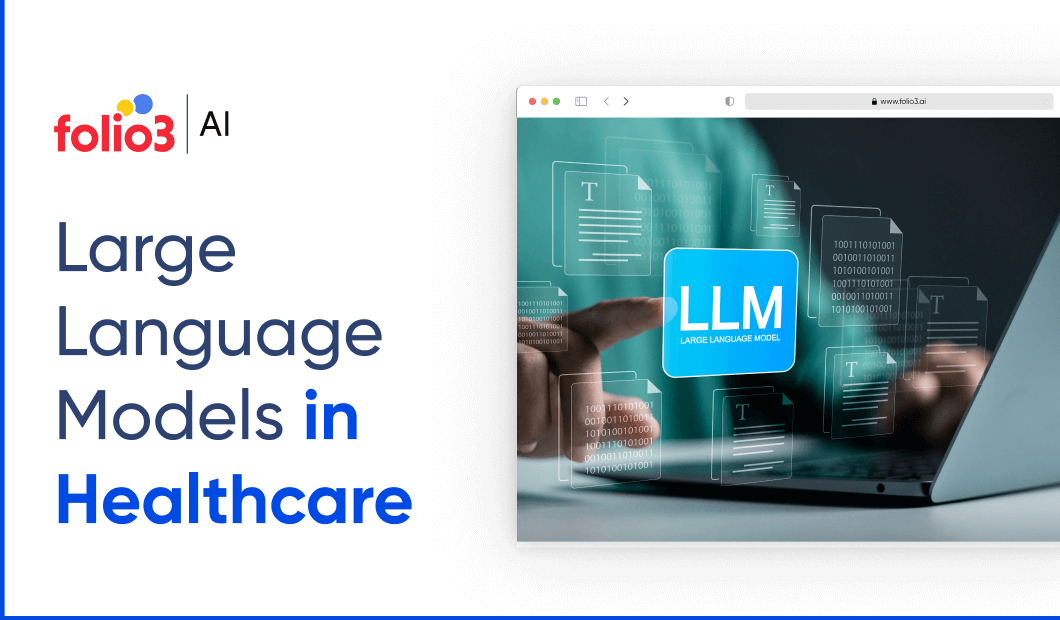The healthcare industry is grappling with numerous inefficiencies that compromise patient care and inflate costs. Administrative burdens, such as convoluted insurance processes and extensive documentation requirements, consume significant time and resources. This diverts attention from patient care and contributes to physician burnout.
High medical expenses further exacerbate the situation, leading many individuals to forego necessary treatments due to financial constraints. Additionally, preventable medical errors and challenges in accessing quality care highlight systemic issues that need urgent attention.
In response to these challenges, Large Language Models (LLMs) have emerged as promising tools to enhance healthcare delivery. These advanced AI systems can automate administrative tasks, such as medical transcription and documentation, thereby reducing the workload on healthcare professionals and minimizing errors.
LLMs also facilitate the extraction and analysis of complex medical data, supporting more accurate diagnoses and personalized treatment plans.
For example, researchers have used LLMs to interpret electronic health records, enabling tailored medical interventions. Moreover, LLMs can improve patient engagement by providing timely and accurate information, enhancing the overall healthcare experience.
However, the integration of LLMs into healthcare is not without challenges. Concerns regarding data privacy, potential biases in AI algorithms, and the need for rigorous validation of AI-generated recommendations must be addressed to ensure safe and equitable application.
Lets read down below such initiatives that highlight the commitment to integrating AI solutions to overcome existing healthcare challenges and improve patient outcomes.
Primary Effects on Healthcare Systems
Together, these effects suggest that when responsibly deployed, LLMs can serve as powerful allies in addressing long-standing healthcare system bottlenecks, improving patient satisfaction, and ultimately enabling more equitable, efficient, and affordable care. Many of these advancements are driven by LLM fine-tuning services, which help tailor models to specific healthcare needs and workflows.
Effect on Clinical Efficiency
LLMs significantly enhance clinical efficiency by automating time-consuming tasks like charting, coding, and summarizing medical histories. Physicians can now use voice-assisted AI tools to dictate notes during patient visits, which are then automatically structured and entered into electronic health records (EHRs). According to a 2023 Nature study, LLMs can extract clinically relevant information with near-human accuracy, reducing documentation time by up to 30%.
This not only increases throughput but also allows clinicians to focus more on direct patient care rather than administrative work.
Effect on Quality of Care
LLMs contribute to better quality of care by providing decision support tools that synthesize vast volumes of clinical data, guidelines, and medical literature. These models assist in diagnosis, flag potential drug interactions, and suggest evidence-based treatments. Many of these capabilities are enabled by Large Language Model Development services, which build custom models tailored for complex healthcare decision-making.
For instance, a recent deployment by the Mayo Clinic used LLMs to analyze pathology reports, leading to faster identification of abnormal results and more timely interventions.
Additionally, personalized AI chatbots are being used to engage patients with chronic conditions, offering tailored advice and reminders that improve adherence to treatment plans.
Effect on Healthcare Costs
By rationalizing operations and reducing redundancies, LLMs help healthcare providers cut costs. Administrative expenses—estimated to make up nearly 25% of total U.S. healthcare spending—can be lowered through billing automation, prior authorizations, and patient communications.
A 2024 article in Applied Intelligence reported that integrating LLMs into hospital systems saved between 10–15% in operational costs within the first year, largely due to reduced manual errors and faster processing times.
As predictive models become more accurate, early interventions may also prevent expensive hospitalizations and complications.
Effect on Healthcare Access
LLMs expand healthcare access, especially in underserved or remote areas, by enabling virtual consultations and AI-powered triage systems. Language translation capabilities embedded within LLMs also bridge gaps for non-English speaking patients.
For example, the startup HealthTap uses LLM-powered chatbots to deliver 24/7 medical advice to users across 160 countries, regardless of location or socioeconomic status. These tools empower patients with timely information and make it possible for healthcare systems to extend their reach beyond traditional settings.
Use Cases with Evidence
You now understand the concept of LLMs in healthcare and their effectiveness. The following use cases illustrate how and where these models are integrated into various healthcare activities, providing practical insights into their transformative potential.
Use Case: Clinical Documentation
One of the most immediate and widely adopted applications of LLMs in healthcare is automating clinical documentation. Physicians spend up to 50% of their day on paperwork, contributing to burnout and reduced patient interaction. LLMs expedite this process by transcribing, summarizing, and structuring clinical conversations in real time.
- Example: Nuance, a Microsoft subsidiary, has integrated GPT-powered tools into its Dragon Ambient eXperience (DAX), which listens during patient visits and automatically generates clinical notes. According to internal data, clinicians using DAX report a 70% reduction in documentation time and a 50% increase in satisfaction.
- Evidence: A 2023 study in Nature (source) found LLMs achieved over 90% accuracy in extracting medically relevant information from clinician notes compared to human reviewers.
Use Case: Diagnostic Support
LLMs assist clinicians in making more accurate and timely diagnoses by synthesizing complex medical data, literature, and patient records. These models can flag potential diagnoses, highlight abnormal trends, and recommend tests based on evidence-based protocols.
- Example: Google’s Med-PaLM 2, a medically fine-tuned LLM, scored at an expert level on the U.S. Medical Licensing Examination (USMLE), and when tested against clinical questions, it delivered answers that aligned with expert opinion in over 92% of cases.
- Evidence: A 2024 Applied Intelligence review highlighted the model’s ability to interpret imaging data, patient history, and lab results with high precision, reducing diagnostic error rates by 15% in pilot hospitals.
Use Case: Patient-Facing Virtual Assistants
LLMs power chatbots and voice assistants that help patients manage appointments, medications, symptoms, and follow-up care. These tools reduce the workload on front desk and nursing staff while improving patient engagement and accessibility.
- Example: Aisera’s healthcare AI assistants (source) use LLMs to manage patient queries, schedule appointments, and deliver pre- and post-operative instructions. These bots operate 24/7, responding in natural language and reducing call center volume by up to 65%.
- Evidence: In a 2023 clinical deployment, AI-based virtual assistants helped reduce no-show rates by 25% and improved patient satisfaction scores by 18%.
Use Case: Medical Education and Training
LLMs are transforming medical education by serving as interactive tutors, generating case studies, simulating patient encounters, and summarizing recent literature. This democratizes access to high-quality training resources and supports continuous learning.
- Example: Stanford and Harvard have piloted LLM-driven educational platforms that quiz students on clinical scenarios, simulate patient cases, and provide real-time feedback. These tools adapt to each learner’s knowledge level.
- Evidence: In controlled studies, medical students using AI-based simulators demonstrated a 20% higher retention rate and performed better in scenario-based assessments compared to those using traditional textbooks alone.
Use Case: Biomedical Research Acceleration
LLMs accelerate biomedical discovery by mining scientific literature, identifying connections between genes, drugs, and diseases, and generating hypotheses. This is especially valuable given the vast and constantly growing volume of biomedical data.
- Example: IBM’s Watson and OpenAI’s GPT-4 have been used to analyze tens of thousands of cancer research papers to identify novel therapeutic targets and drug repurposing opportunities.
- Evidence: A team at MIT used LLMs to analyze electronic health records and scientific literature, leading to the discovery of potential biomarkers for pancreatic cancer earlier than conventional methods (MIT News).
Final words
Large Language Models (LLMs) are poised to fundamentally transform healthcare by addressing inefficiencies, reducing costs, and enhancing patient care across multiple dimensions. By automating routine administrative tasks, improving diagnostic accuracy, and supporting personalized treatment, these advanced AI systems are helping mitigate longstanding challenges, ranging from bureaucratic burdens to preventable errors.
As LLMs continue to evolve, their capacity to integrate comprehensive data analysis with real-time decision support will empower healthcare providers to deliver more efficient, equitable, and high-quality care. However, the successful adoption of these technologies hinges on a balanced approach to innovation and risk management, emphasizing data privacy and algorithmic fairness.
With rigorous implementation and continued oversight, LLMs offer a promising pathway to reimagine healthcare delivery and ultimately improve patient outcomes on a global scale.

Areeb is a versatile machine learning engineer with a focus on computer vision and auto-generative models. He excels in custom model training, crafting innovative solutions to meet specific client needs. Known for his technical brilliance and forward-thinking approach, Areeb constantly pushes the boundaries of AI by incorporating cutting-edge research into practical applications, making him a respected developer in folio3.









